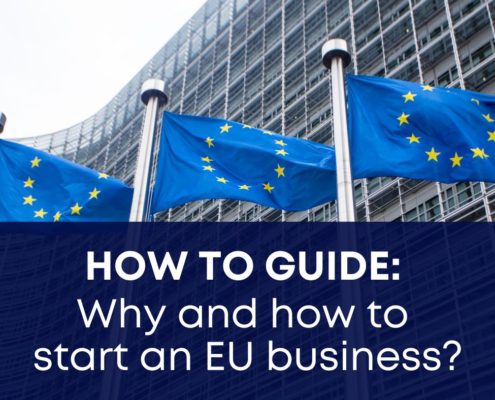Fundamentals of Effective Business Communication:

Best practices for clear and effective business communication, essential for leadership.
This blog post article addresses you who is an entrepreneurial leader, a senior business manager or a solopreneur. It may be followed up with small series of posts in the near future; depends on the resonance to this one. Feedback, both positive and negative are welcome.
The single biggest problem in communication is the illusion that it has taken place *
You have probably heard it. At first it sounds weird. On second thought it sounds witty. If you some day decide to unpack it, I am happy to help you to discover that it is a rare nugget of timeless wisdom.
A casual online search for ‘Effective Business Communication’ turns out 7Cs: clear, concise, concrete, courteous, complete, coherent, correct. Great advice. In addition I’d like to direct your attention to a few Higher Order Factors. They cause your message to gain traction with human beings other than administrators. Things like ‘attention’, ‘intention’ and ‘resonance’.
They are not as airy-fairy or irrelevant as one could suspect. Sceptical? Well, when was the last time you listened to (or gave) a presentation loaded with unreadable text slides, jargon and abbreviations? Well, was the intention really to create understanding?
7 CIIs to improve mutual understanding in business communication
Here are seven CIIs (Counter-Intuitive Insights)** which help improving mutual understanding in business communication. These CIIs are surprising observations and suggestions derived from a deep-dive into ‘attention’, ‘intention’ and ‘resonance’. They are not just intellectual gymnastics.
CII-1: You cannot not communicate***. Your intention and attitude bleeds through no matter if you say nothing or what you say in words. People sense it when the proclaimed message does not match with your intention. And, as if this was not bad enough, you may have communication habits which ‘say’ things you do not even intend to say.
Know what you intend. Ask yourself: why do I want to speak, write or show? Why do I want to listen, read or watch? Don’t obsess with what you don’t want. Have a clear and legitimate intent and communicate accordingly.
CII-2: Communication is not just ‘talking’. It is also listening. The default use of the word ‘communication’ as ‘sending’ is rather funny. Imagine a world with only talkers and no listeners. A very loud, a very stupid and a very violent world. Nobody learns anything.
Why not try investing quality time in designing good questions? Or why not give yourself permission to spontaneously ask child-like questions? Follow that up with attentive listening and the intention to understand. No matter how long learning curves have been flattened, they will increase exponentially by asking and listening with an open mind.
CII-3: Paying attention is not just for listeners. The speaker needs to pay attention to an audience and check in real time if the message is digestible. Are their eyes glazing over? Do you let them contribute instead of force-feeding them with your favourite details?
CII-4: Your audience is not an animated biomass. Talk to them as sovereign individuals, as mature adults, as decision-makers in their lives, as chess-players and not as pawns. Don’t worry if they at first behave like a biomass. Just look them in the eye and talk to them as if the one in charge is ‘at home’ and deserves respect. And you will see someone coming home to switch on the lights.
CII-5: Don’t suppress negative feedback. Stop being offended instead. The more you succeed with your suppression of negative feedback, the more your uninformed confidence grows and the more you believe your own bs. Katharina The Great’s most trusted administrator took her on train rides passing flourishing villages. Little did she know that she only saw facades of fake houses. He had ordered these ‘villages’ to be built so she would feel happy and self-satisfied with her social policies. Similarities in recent history are purely coincidental.
CII-6: Pay attention to how you influence and how you are influenced. We tend to think of our ability to influence as being smart and being influenced as being gullible. As we consider ourselves to be to too smart to be gullible, we direct most of our attention to getting better at influencing and almost no attention to how we are influenced. In fact we cannot not influence and we cannot not be influenced. But we do have some choice in what we take in, just as we have some choice in what we eat. Is there a dependence on spoon-fed junk-think or do we select our food for thought?
CII-7: Stop fixating on ‘first impressions´. When preparing for important business meetings why not focus on the last impression you would want to make. When you do that your 1st impression efforts will come natural.
I once had a small scale entrepreneur (painting houses) in my neighbourhood. He had a remarkable way of jump-starting new business in suburban residential communities. It wasn’t how he introduced himself. As all his competitors, he asked new customers to prepay for paint. Normal. What was special was how he said good bye.
When it was time for a last hand shake he handed the customer a check with a small and very precise amount. He presented it as “money back for paint not used”.
He did not have to do that. Experienced house owners would simply ask for the unused paint. But here, with young families and first time owners, people stared puzzled at the check. They wondered how he had arrived at a specific amount like €14,71. In response he weighed an imaginary paint bucket with his left arm, nodded towards his car and muttered “I have a scale in the trunk”.
Some smiled, some laughed. Some were touched. He stoically tolerated the occasional dunks and hugs, holding on to his imaginary bucket. Many asked for the paint that was left instead of a check. But a surprising number turned into enthusiastic ambassadors and they opened up whole neighbourhoods for his business.
If you are like me 20 years ago you wonder “what’s the fuzz about? Ambassadors?! Give me a break. Waste of money”. Well, think about what this gesture of unprompted repayment meant to inexperienced young family owners. It meant “o wow … what a relief … I was lucky to deal with a business where I don’t get f….d over because I didn’t read the fine print. This guy deserves to be recommended. But only to decent people who deserve his decency.” And they went to work the same day. Being genuinely useful to their decent neighbours improved, as a side effect, their social status among them.
They did not formulate this thought when they thought it. But they thought that thought … in a second. I know. Because I surveyed some of them.
Hope you can relate to the story even if it can’t be applied 1:1 to any other business. Whatever you do needs to be unique. Why not play around and recalibrate your creative attention? Why not turn it towards a remarkable last impression? For important meetings or important customer interactions. After some tinkering you may have some good ideas.
Conclusion:
Make conscious use of your intention, invest attention and create resonance. You become automatically more innovative and agile in business communication.
If you see a need to learn fast for you or your management team, to improve communication with any of your stakeholders go ‘here‘ and get in touch.
Thomas Bothe,
Leadership Communication Trainer
ABOUT THE AUTHOR:
Thomas Bothe, former CEO and veteran executive trainer, has spent a good part of two decades helping leaders enhance their communication and strategy. His mission is to bridge the gap between intent and perception, focusing on essential business communication skills in leadership, strategy, and reaction. Thomas trains CEOs and management teams across Europe, aiming to improve their internal coherence and agility. Listen and learn more about his unique training approach at art-of-reaction.com, where leadership transformation is not just taught, but achieved. Expect to be provoked, inspired, and, most importantly, transformed.
* George Bernard Shaw (1856-1950)
** CIIs, abbreviation invented today.
*** Paul Watzlawick (1921-2007)






 Schedule a call
Schedule a call
 Send a message
Send a message